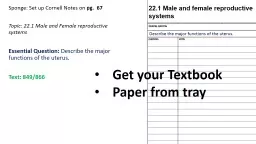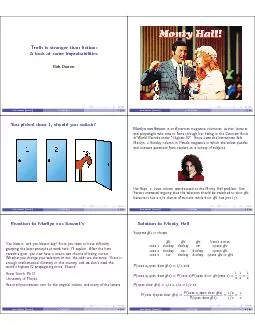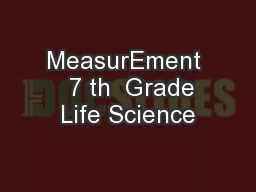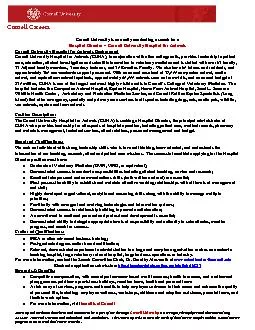PPT-Sponge: Set up Cornell Notes on
Author : dayspiracy | Published Date : 2020-06-16
pg 67 Topic 221 Male and Female reproductive systems Essential Question Describe the major functions of the uterus Text 849866 221 Male and female reproductive
Presentation Embed Code
Download Presentation
Download Presentation The PPT/PDF document "Sponge: Set up Cornell Notes on" is the property of its rightful owner. Permission is granted to download and print the materials on this website for personal, non-commercial use only, and to display it on your personal computer provided you do not modify the materials and that you retain all copyright notices contained in the materials. By downloading content from our website, you accept the terms of this agreement.
Sponge: Set up Cornell Notes on: Transcript
Download Rules Of Document
"Sponge: Set up Cornell Notes on"The content belongs to its owner. You may download and print it for personal use, without modification, and keep all copyright notices. By downloading, you agree to these terms.
Related Documents














